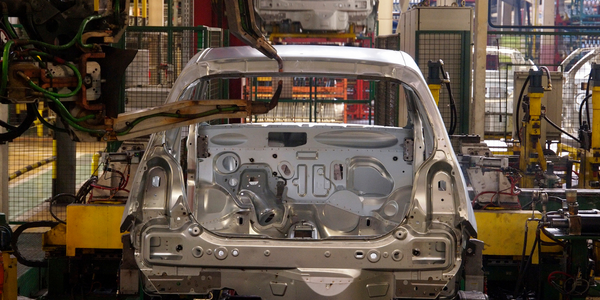Applicable Functions
- Quality Assurance
Use Cases
- Chatbots
- Visual Quality Detection
Services
- Testing & Certification
About The Customer
S&P Data is a prominent contact center in North America, boasting seven locations across the United States and Canada. The company serves a prestigious clientele, including Fortune 100 and Fortune 500 companies, and prides itself on delivering the highest quality of customer service. This commitment to excellence is heavily reliant on the people they hire, making the recruitment process a critical aspect of their operations. The company's reputation and success are built on its ability to attract, hire, and retain top talent who can uphold its high service standards.
The Challenge
S&P Data, a leading North American contact center with seven locations across the U.S. and Canada, was grappling with several recruitment-related challenges. The company was experiencing low contact rates, overburdened recruiters, and high employee turnover. These issues were particularly concerning given the company's commitment to providing top-tier customer service to its Fortune 100 and Fortune 500 clients, a goal that heavily relies on the quality and dedication of its staff. The recruitment inefficiencies were not only affecting the company's ability to maintain high service standards but also impacting its overall operational efficiency and employee morale.
The Solution
S&P Data turned to Ideal's Artificial Intelligence (AI) solution to address its recruitment challenges. The AI solution was designed to enhance the candidate experience, streamline recruiter tasks, and improve employee retention rates. The implementation of Ideal's AI led to a 400% increase in contact rates, thanks to the use of a chatbot and its 24/7 availability. This immediate improvement in candidate experience meant that potential employees could be reached promptly. Furthermore, the AI solution significantly increased recruiter efficiency by automating the initial stages of the recruitment process, such as resume screening and preliminary phone interviews. This allowed recruiters to focus on building relationships with candidates. Lastly, the AI solution improved the quality of hires by enabling the company to reach the right candidates first, a critical factor in the call center space where 75% of attrition occurs within the first 60 days.
Operational Impact
Quantitative Benefit

Case Study missing?
Start adding your own!
Register with your work email and create a new case study profile for your business.
Related Case Studies.

Case Study
Rapid and Simple Installation Provides Access to Critical Data
The customer needed to monitor non-contact alignment and non-contact process temperature in different positions along a 100-meter production line. Space around the line is tight and operators and forklift trucks are passing by constantly. Installation of correctly routed cables from sensors back to the control station would have been expensive and would have taken too long and caused too much disruption to ongoing operations.
Case Study
Real-Time IoT Tracking and Visualization Improve Manufacturing
Shimane Fujitsu, a wholly-owned subsidiary of Fujitsu and a leading manufacturer of business notebooks and tablets, set out to improve processes where factory inspections found product errors. Prioritizing product rework based on shipping date was challenging, and it caused Shimane Fujitsu to incur additional shipping fees. The company needed a way to collect data to better track the location of products in the rework cycle as well as monitor progress in real time. The collected data would also help process analysis for future improvements.

Case Study
Automatic Vision Inspection Solution for Product Traceability
With greater market demand for food safety, traceability is receiving increasingly more attention in the food and beverage industry as well as the packaging industry. One of the world's leading providers of beverage containers required a system to identify bar codes and alphanumeric characters on ink-jet-printed labels at a run rate of 7 units and minimum 99.9% accuracy. Since there were few engineers in the factory, the customer sought to implement a reliable system with an easy-to-use GUI for workers with a less technical background.

Case Study
HSBC's Transition to Conversational Banking through Intelligent Automation
HSBC, one of the world's largest banking and financial services organizations, was facing a challenge with its customer service operations. With over 19,000 customer service agents, the bank was dealing with a high volume of repetitive tasks that put pressure on its agents. The traditional career path in the contact center world was also leading to inevitable attrition, as it was defined as agent → team manager → department manager → operations manager → head of contact centre. This lack of opportunity as the field narrows held back the chance of reaching the highest possible customer satisfaction with every interaction. Furthermore, HSBC was planning to shift towards Conversational Banking, which was expected to grow interactions considerably and require conversational experts to manage the chatbots.

Case Study
Automated Inspection of Axial Piston Motors
Earth moving machines require an immense energy source to provide the power they need for use within civil engineering works. ‘Hydraulic Motors’ allow this power to be applied to enable the machines movement and in addition ‘Control Valves’ also provide the operator with the precise feel and control required to undertake the necessary tasks needed for such machines, including trenching, rock breaking and demolition. These same motors are also used in cranes, wheel loaders and general construction equipment. Though not a new product, the designs of such motors and control valves have been around a few decades, the overall method for manufacture has changed rapidly over the last few years to take account of the need for more modular designs, manufacture and just-in-time manufacturing. Kawasaki Precision Machinery (UK) Ltd based in Plymouth, UK is one of the leading manufacturers of such motors and pumps. They approached Industrial Vision Systems Ltd to come up with a solution to provide automated inspection of such pumps for their semi-automated assembly process. The pumps requiring inspection are at a sub-assembly stage when they are due for the inspection process to take place. Due to the highly modular nature of the construction each part of the pump can have many different derivatives which overall have a different effect on the pump in industrial use. It is therefore critical for the manufacturing process to check all components are the correct type and number for the construction of the pump to begin. Once built it is difficult and costly to rework such units if a fault is detected later in the manufacturing process, therefore automated visual inspection is critical for the success in building quality motors and pumps.

Case Study
Parts Quality Gets Robotic Boost
When manufacturers, such as the world's top car makers and automotive parts suppliers, produce components in their factories, traditional QA testing has been limited to verifying the quality of random parts pulled off the line throughout the day.It was time consuming to perform the detailed tests required, and defective parts could get through despite randomized tests.If a defective part caused a recall or accident, manufacturers could face costly litigation or irreparable damage to their reputation.







